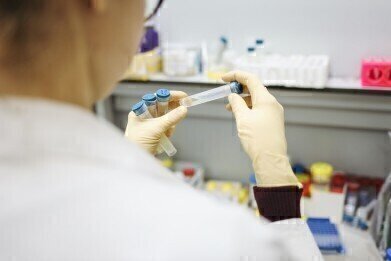GC-MS
Can a Breathalyser Detect COVID-19?
Jun 16 2021
COVID-19 tests have become part and parcel of the ‘new normal’ as societies aim to get on with life with the virus still present. Some people such as nurses require testing on a regular basis as part of their job, while others use tests sporadically when symptoms are present.
Whatever the case, it’s an important tool to slow the spread of the virus, confirming whether people are infected so they can self-isolate. However, given that the test involves the invasive procedure of swabbing tonsils and nostrils – causing people to gag, sneeze and generally cringe – it’s no surprise that many are looking for an easier, quicker, non-invasive alternative.
Is COVID-19 in your breath?
Having got to grips with the virus over the past 18 months, we’re now well aware that it’s primarily airborne and spread through respiratory droplets. By that logic, it should also be detectable from someone’s breath.
Or at least, that’s the thinking of researchers in several countries who are working on breath tests for COVID-19. Often referred to as ‘breathalysers’, these tests use technologies such as gas chromatography (GC) and mass spectrometry (MS), with a view to detecting biomarkers of the virus from breath samples.
GC-MS technology has a wide range of applications, including the identification of volatiles which create distinctive flavours and smells, as explored in ‘Analysis and Identification of Mezcal and Tequila Aromas by Ambient Ionisation MS, GC-MS, and GCxGC-MS’.
Amsterdam’s SpiroNose trial
While many of the work-in-progress breathalysers use GC-MS, Amsterdam’s Public Health Service (GGD) has recently been testing a new approach using nanomaterial-based sensors. SpiroNose contains metal oxide semiconductor sensors which dectect volatile organic compounds from exhaled air.
If someone is infected, it’s thought the mixture of compounds across its seven sensors will change, although the biologic processes aren’t specifically detailed. In simpler terms, it’s been described as the measurement of a correlation. The technology was available to people being tested in Amsterdam from February.
So does it work?
Unfortunately, the results weren’t as promising as some hoped. Not long after it was launched, 25 people were found to have COVID-19 despite it not being detected by SpiroNose. That led to its use being halted by the GGD.
However, all is not lost. Breathomix, the company behind the device, suggest that the technology isn’t meant to diagnose COVID-19 definitively. Instead, it’s there to rule out negative cases. Cases which aren’t negative are shown as inconclusive, with people then required to take a different test – such as antigen or polymerase chain reaction (PCR).
Because it didn’t provide misleading or incorrect results per-se, the Dutch government has not withdrawn authorisation for the device. With SpiroNose able to confirm negative cases, it may still be useful as a non-invasive first step for staff who need regular tests or even screening attendees at large events.
Events
May 11 2025 Vienna, Austria
May 18 2025 Tempe. AZ, USA
May 21 2025 Birmingham, UK
Jun 01 2025 Baltimore, MD, USA
Jun 15 2025 Bruges, Belgium














